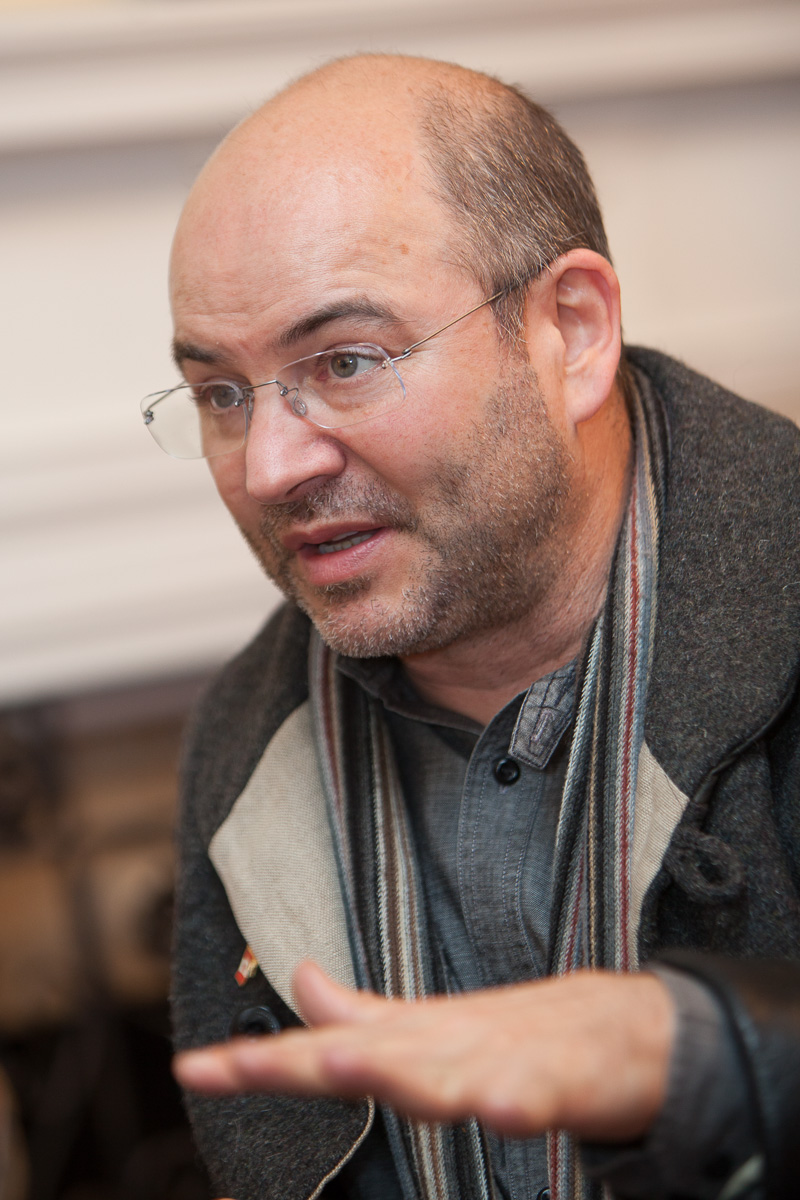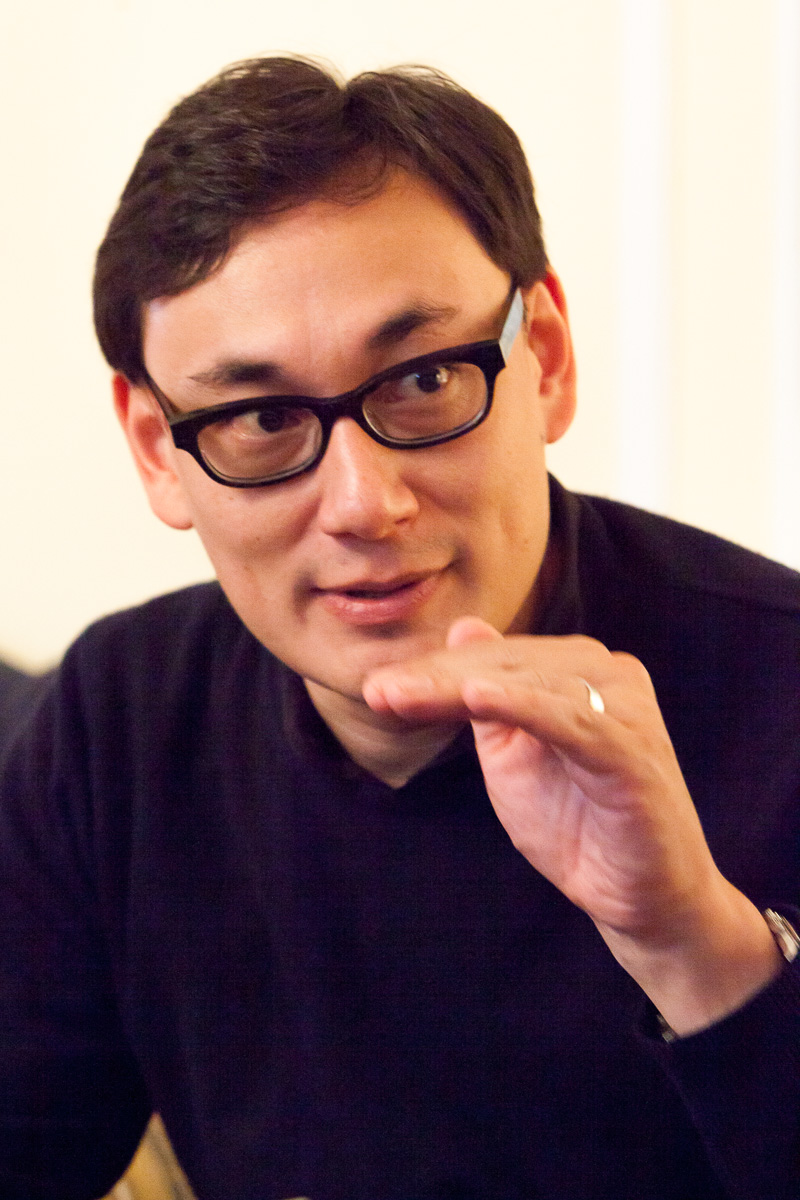Architects reflect as Bader Centre takes shape
November 4, 2013
Share
The Isabel Bader Centre for the Performing Arts (IBCPA) is steadily taking shape on the Kingston waterfront. When it opens in 2014, the facility will feature an acoustically superior concert hall, a studio theatre, a screening room and a rehearsal space. It will be home to the university’s film and media department, and will be used by the departments of drama and music, and the BFA program.
The IBCPA was designed by the internationally acclaimed architecture firm Snøhetta, together with Ottawa’s ema Architects. Senior Communications Officer Meredith Dault (MD), had a chance to sit down with Snøhetta’s Founding Partner and Principal Architect Craig Dykers (CD) and Project Architect Takeshi Tornier (TT) for a chat about the new building.
MD: You first started planning this building in 2007. What was your initial concept for it?
 Architect Craig Dykers
Architect Craig Dykers CD: Fundamentally, we wanted a place that brought light into (the users’) experience. We wanted to establish a strong connection between the landscape and the character of the shore, and well as the broader environment. Ultimately, of course, we wanted to create a (recital hall) that could potentially be unparalleled in the world. We used the most advanced systems for modeling the room that are available today. And despite all the advanced technology, we also wanted to build something that would feel natural and organic – as if it’s always been there.
MD: What role did the existing architecture at Queen’s and in Kingston play in your design?
TT: Our building uses limestone, only it has been reinterpreted. It opens your eyes to what’s possible. Our use of limestone is much more monolithic – the proportion of the stone is different from how you traditionally see it used in this area. We use very long pieces with smooth, honed finishes. We want it to look like the stone is growing out of the landscape. This building also incorporates two historical limestone buildings – so you see old and new sharing the same materials.
CD: We like being able to provide a new perspective on a material that people are already very familiar with. It’s like being married and still wanting to learn new things about them, even though you’ve lived together for so long.
 Architect Takeshi Tornier
Architect Takeshi TornierTT: We’re also reusing a lot of the wood from the historic buildings. We salvaged floors, joists, columns, which were cut up and reshaped.
MD: What kind of architectural challenges did this building present?
CD: Working with existing historic infrastructure is always a challenge. These buildings have a great deal of memory. These ones were used as a brewery, and then as a hospital during WWI. Later, the Domino Theatre was based in the stable building. And then there is the contemporary desire to bring the university’s (creative arts programs) and the community in one place, together with an acoustically superior performance space. That desire has to exist in these structures that want to hold on to their original identities. Bringing all of that together was a big challenge.
MD: What’s been the most exciting aspect of this project for you?
TT: I’m most excited about the way this building uses space. For example, you access the building through a narrow entrance and then the space opens and widens down towards the lake. We’re also happy with the way the aesthetic and acoustic functions came together in this project, particularly in the main performance space.
CD: We really looked to the environment when we were designing it. For example, we came across a beautiful limestone outcropping on one of our early visits to Kingston. Each layer of limestone seemed to depict a different event in the history of this place, laid down over the millennia. We wanted to bring that into the concert hall, but we reinterpreted it in wood. So while we’ve created the limestone’s character in wood, the wood also relates to musical instruments. That room is also unusual in that it is not entirely symmetrical – I’ve never seen another example of that. We wanted something asymmetrical so it would feel more organic. Many people won’t notice or care, but they will feel something special, even if they can’t pinpoint it.
Click for more on the Isabel Bader Centre for the Performing Arts.